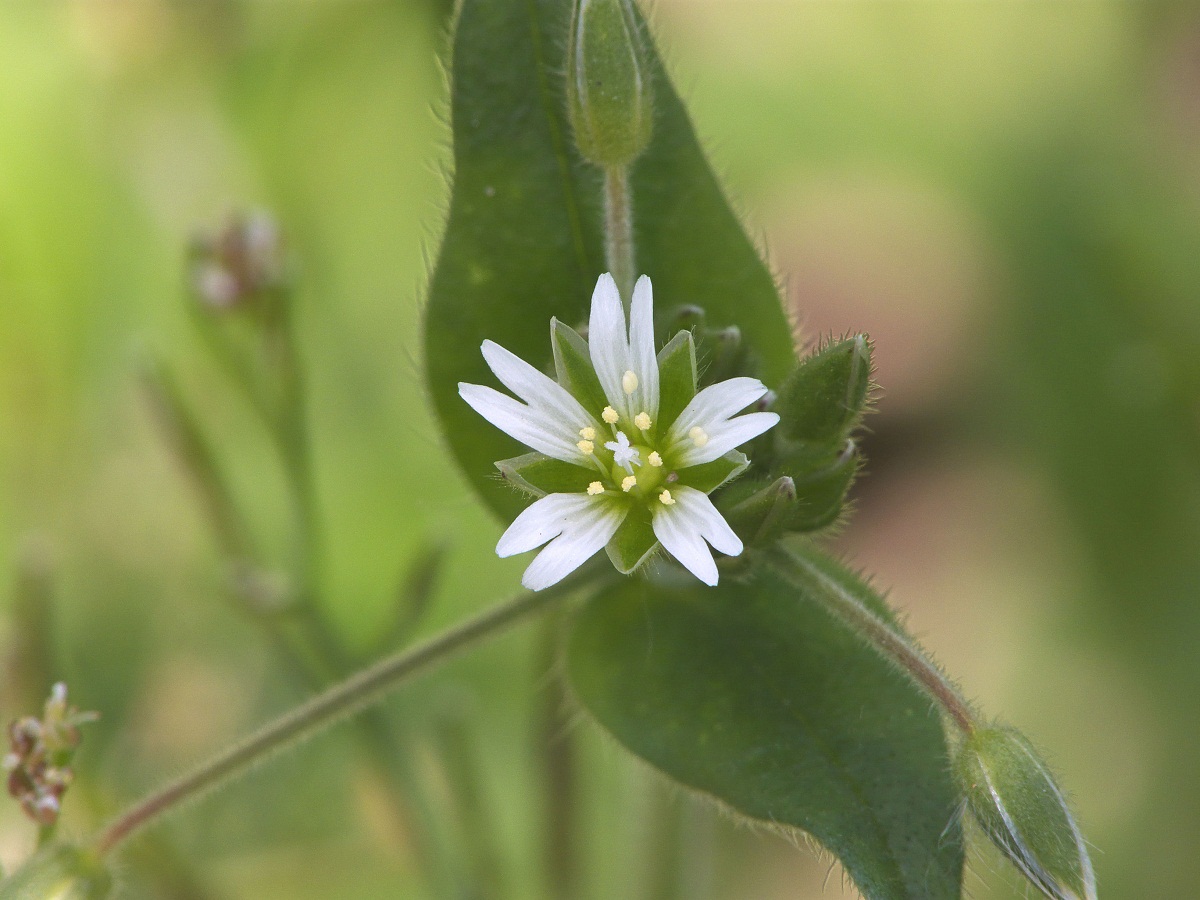
The Cerastium fountain is the plant you need, if you are looking for a groundcover plant, which stand out for generating a large amount of flowers throughout spring and also in summer.
Cerastium fountain it is the botanical name that this species receiveswhich is part of the Caryophyllaceae family and is generally called chickweed, merusa or common mouse ear. It consists of a vivacious or biennial herbfrom East Asia, exactly from the Himalayas, which has the capacity to grow around 30 cm high and has hairy and ascending stems whose length is around 10-30 cm.
Features

Among its most significant characteristics stands out that It has leaves that have a teardrop shape and develop opposite each othercreating a shape similar to that of a star; In addition, it has small, hairy white flowers, which are arranged in pancupid cymes and have five ovate-lanceolate sepals.
These reach about 7 mm in length, as well as five white petals, always present, which are deeply forked and they may either be the same or a little longer compared to the sepals; it also has 10 stamens and 5 styles. The fruit of the Cerastium fountain It comes in the form of a curved capsule and is usually born during the spring and also in the summer.
Habitat of the Cerastium fountain
Merusa tends to develop both within disturbed areas and fields with conditions ranging from wet to dry. It should be noted that although this plant needs a good exposure to the sunthe truth is that it has the ability to withstand a light shadow well. It can also be said that it is usually a common visitor on roadsides, lawns and even on the roadsides..
This plant tends to develop best in soils that have a neutral pHacidic or alkaline; Likewise, its underground part can grow with greater vigor as it has supports that have a clay, sandy or loamy texture, since in general, they remain humid.
It is essential that at the time of irrigation this information is kept present, as well as other aspects, such as the temperature, sun exposure, time of year and soil textureamong others; in order to achieve a constant balance in terms of the humidity level of the substrate.
In relation to its light requirements that the Cerastium fountainit is possible to point out that the same it is a fairly demanding plantwhich should only be located in semi-shady spaces in order to prevent its growth from being negatively affected.
Care

This species is known for having an easy cultivation that requires frequent exposure to sunlight, which is able to easily tolerate cold climates and frost. Because it is not very demanding in relation to the soil, it is possible that it grows easily in dry, calcareous and poor lands. It is also convenient to mention that its planting must be carried out during the spring or autumn.
Although has good resistance to droughtsThis plant usually appreciates weekly waterings during the summer. Likewise, although it does not need the application of special fertilizers, it is convenient to prune it occasionally throughout the year to make sure that its invasive growth is kept under control and thus, prevent the development of bald spots.
It can be multiplied by seeds sown throughout the spring or early fall, when cuttings planted directly in their final area should be used. It stands out for being a resistant species against diseases and common pests, although overwatering could cause their roots to rot.
The Cerastium fountain It is a very widespread plant because of its decorative appearance and ease of cultivation; So now that you know more about it, would you like to use it as an ornamental plant for your garden?
